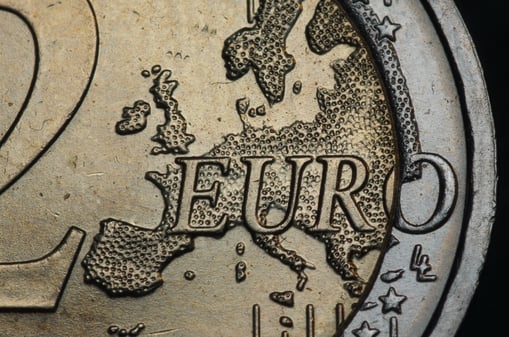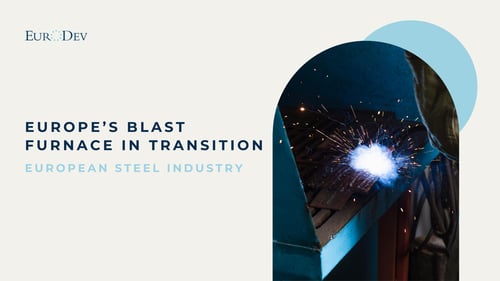What's Attracting US Manufacturers to the European Construction Market?
Construction activity is projected to start picking up again slightly in 2025. The current year will see a 2% reduction in new build volume, while the downturn in work on existing buildings in 2023 and 2024 is driven largely by the reduction in previously extremely generous state subsidies. Civil engineering will grow due to necessary investments in energy supply, expansion of the transportation network, and public transit 2.9 percent in 2023. Italy, Norway, Slovakia, and Poland are expected to see the largest increases. What's the full state of the construction market in Europe? Find out below...
Economic Overview of the European Market
Overall, economic activity across Europe held up well in the first half of 2022, performing better than expected. Mobility normalization supported a rebound of contact-intensive services, including tourism-related sectors, whose recovery in Europe had lagged that of goods-producing activities and non-contact-intensive services throughout most of 2021.
However, activity slowed sharply throughout the summer as the effect of several shocks began to sink in. the sharp erosion of the purchasing power of households has shifted consumers’ sentiment dramatically. Confidence plunged also in the business sector, amid high production costs, remaining supply bottlenecks, tighter financing conditions, and heightened uncertainty.
Several factors may account for the rise in unexplained inflation:
- First, Europe has been hit by two tail-risk events: the pandemic and Russia’s war in Ukraine. These shocks may have altered the structural relationships underpinning the inflation process.
- The commodity prices raise affected the production of several industries, especially in food. The cost of energy is another of the main inflation drivers, mostly related to Gas shortage due to the war in Ukraine.
- For 2023, inflation is expected to decline gradually to less than 10%. In the case of advanced European economies, the decline will be slightly slower than in emerging European economies.
The Construction Market in Europe
The total value of the European construction market was estimated to be worth €1,914 billion. This includes civil engineering and infrastructure work. Output is dominated by five countries - Germany, the United Kingdom, France, Italy, Spain, and The Netherlands.
Together, these countries account for more than half of Europe’s total construction output. When measured per head of the general population, the highest values per head are recorded in Luxembourg and Norway.
.png?width=642&height=483&name=Screenshot%20(361).png)
Future of the European Construction Market
The EU construction sector suffered some setbacks in 2022. However, the industry is still growing, but at a low rate. War in Ukraine: In June 2022, the EU's construction output was 2.3% lower than in February before the Ukraine war began. The difference in output between countries is huge. The Austrian and German construction sectors have experienced the biggest declines of -6.3% and -4.5%, respectively.
Material shortages: from Covid-19 to drought-induced supply chain disruptions, also after Covid-19 a new hurdle has appeared: low water levels. Waterways are the main mode of transport for many raw building materials (e.g. sand and gravel). On many rivers, barges can no longer be loaded at full capacity.
.png?width=642&height=339&name=Screenshot%20(362).png)
Surging energy prices push up concrete, cement, and brick prices: Since the outbreak of the pandemic in 2020, many building materials have increased in price. However, some of these prices have stabilized or have even decreased a bit in the last few months.
Non-Residential, Renovation & Residential Construction
Commercial real estate investments are investments mainly across the office, retail, industrial, and hotel industries. Historically, office space has been attributed for the highest share of investment as not only does the demand outweighs other sectors but the cost of development and acquisition of land in prime city locations is often higher than other commercial property. In Germany, pressure is mounting in new home construction. “The main reasons for this include significant increases in housing loan rates, sharp rises in construction costs, and the reduction in federal subsidies for new home construction,” says Ludwig Dorffmeister, ifo expert. The results of the ifo survey in December showed that order backlogs, while still at a high level, fell for the fifth month in a row. The new orders the industry sorely needs have failed to materialize.

The markets that have been the most affected by the crisis are France and Spain as both countries were hindered in their activities because of the health measures and restrictions installed by their governments. Renovation and maintenance account for almost 50% of the total construction volume. The total annual revenue of this sector in the EU is approximate €850bn, which makes it an important economic segment.
Since the beginning of 2021, the Construction confidence indicator is positive for Germany, Austria, and the Netherlands. France, Spain, and Belgium are starting to recover from the impact of the crisis, which is verified by the number of permits in the non-residential construction sector.
The outlook for residential construction remains positive in 2021. The growing demand for housing among the citizens in the UK is boosted due to the cut in stamp duty on the sale of new homes due to which new orders have increased at a much faster rate. Also, demand for the residential construction sector is still strong in the German market. It is expected that the real total Western European construction spending will rise by just 1.2% in 2022. With headwinds set to linger into 2023, construction spending is expected to rise just marginally next year, by only 0.4%.
Interested to learn more about your company's potential to expand into the European market? Feel free to schedule a meeting with us and we will be more than happy to guide you through your European expansion.
Sources: Deutsche Welle, IMF
Category
Related articles
-

Beyond the Blast: Europe’s Furnace Transition
25 January 2024This article will explain why the blast furnace is now subject to a makeover, and what this...
Read more -

Navigating the Maze: European Regulations (Part II)
8 January 2024In this article, we will dive more specified into the Essential certifications for product that...
Read more -

Navigating the Maze: European Regulations and Certifications
8 January 2024Today we will take you through the vital certifications and regulations companies must comply with...
Read more

